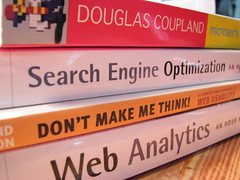Understanding Media and Social Media
 We consume information, educational content, and news through various media sources. Social media stands out as a powerful medium designed for sharing through social interactions. It leverages easily accessible and scalable publishing techniques, essentially becoming a collective of internet-based applications built upon the foundations of Web 2.0. These applications facilitate the creation and exchange of user-generated content, transforming the way we interact and share information online.
We consume information, educational content, and news through various media sources. Social media stands out as a powerful medium designed for sharing through social interactions. It leverages easily accessible and scalable publishing techniques, essentially becoming a collective of internet-based applications built upon the foundations of Web 2.0. These applications facilitate the creation and exchange of user-generated content, transforming the way we interact and share information online.
Examples of Social Media Applications:
Here are just a few examples of how diverse the social media landscape is:
- Blogs: Platforms like Blogger and WordPress empower individuals to publish their thoughts and ideas.
- Micro-blogging: Twitter allows for concise updates and quick conversations.
- Social Networking: Platforms like Facebook, LinkedIn, and formerly Orkut connect individuals and foster online communities.
- Wikis: Collaborative platforms like Wikipedia allow for the collective creation and editing of information.
- Social Bookmarking: Sites like Delicious and StumbleUpon help users curate and share interesting links.
- Social News: Platforms like Digg and Reddit highlight trending news stories and discussions.
- Photography and Art Sharing: Platforms like Flickr and Picasa provide spaces for visual content sharing.
- Video and Music Sharing: YouTube and MySpace Music cater to multimedia content creators and consumers.
- Presentation Sharing: Slideshare enables the sharing of presentations.
- Community Q&A: Platforms like Yahoo! Answers and WikiAnswers facilitate knowledge sharing through questions and answers.
Social Media Marketing (SMM)
Social media marketing encompasses the use of social networks, online communities, blogs, wikis, and other collaborative online media for various business functions, including marketing, sales, public relations, and customer service. Lloyd Salmons, the inaugural chairman of the Internet Advertising Bureau's social media council, wisely pointed out that social media isn't solely about large networks; it's about facilitating conversations between brands and their audiences. This shift represents a fundamental change in how businesses engage with their customers.
Social Media Optimization (SMO)
Social Media Optimization (SMO), a term coined by Rohit Bhargava, refers to the strategic approach of managing social media activities to drive traffic to website content. SMO complements search engine optimization (SEO) as another key method for online website optimization. While SEO focuses on enhancing visibility in search engine results, SMO aims to optimize a website for increased linkability, visibility in social media searches, and inclusion in relevant blog posts, podcasts, and vlogs. Essentially, SMO involves strategically enhancing your online presence across a spectrum of social media platforms.
Five Rules for SMO:
Bhargava outlines five key rules for effective SMO: increasing linkability, simplifying tagging and bookmarking, rewarding inbound links, facilitating content dissemination, and fostering mashups.
The Importance of Social Media Marketing
Social media marketing involves promoting businesses through social media channels, offering a potent strategy for gaining links, visibility, and significant traffic. Few low-cost promotional methods can rival social media's ability to attract a large volume of visitors, many of whom may return repeatedly.
Tangible Website Benefits:
- Links: A strong social media presence generates backlinks, which contribute to improved search engine rankings.
- Primary and Secondary Traffic: Social media drives both direct and indirect traffic, helping build a community of supporters around your brand.
Social media has revolutionized the business world, becoming an indispensable tool for successful marketing and sales strategies. Beyond business-consumer interactions, social media platforms facilitate networking and communication among individuals, solidifying their place as a vital aspect of modern life. These platforms not only connect individuals but also link different facets of our professional and personal lives, ultimately creating a dynamic and interconnected digital landscape.